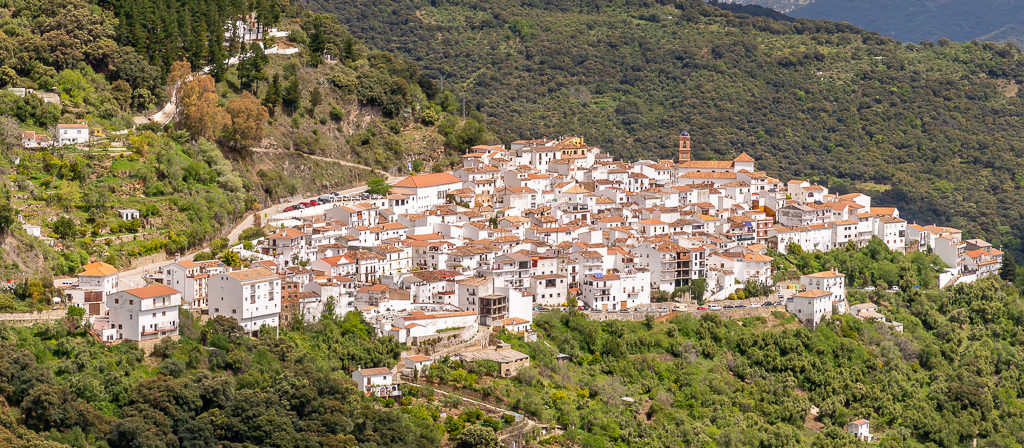
White-washed hill towns . . . tapas and regional wines . . . exuberant flamenco dancers . . . enormous cathedrals . . . and flowery outdoor shopping districts. Those are but a few words that describe the southern coast of Spain. Also known as the Costa del Sol, this region has some of the best of everything this country has to offer. They are easily accessible while touring the hill towns of southern Spain.
So how do you plan a visit to such a phenomenal region in Spain when there’s so much to see?
On our most recent European whirlwind visit, Ron and I went to Spain . . . and we fell in love with the country all over again. Although our time was limited, we managed to see most things on our “must-see” list.
We drove the windy roads to little white hill towns perched high in the Sierra Nevada Mountains. We explored the boho-chic seascape towns along the Mediterranean coast. And, we toured truly amazing historical sites in the elegant city of Granada.
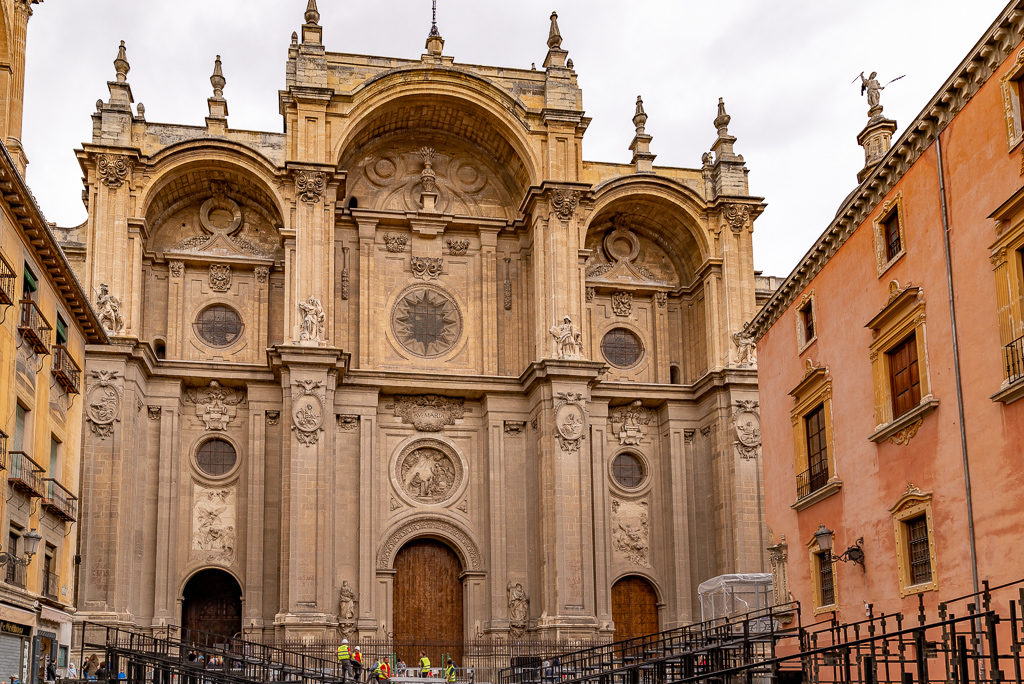
Whether you have a few months, a few weeks, or a few days, there’s plenty to see and do in the region known as the Andalucia. However, for this article, I write about how to get to the hill towns and what to see in the amazing town of Ronda.
How to Get to the Costa del Sol
If you’re going to the Costa del Sol, you’ll probably fly into Malaga. It is the biggest city in the region, and it has a new modern airport. There are lots of things to see in Malaga, however, if you stay in one of the nearby coastal towns, like we did, you might want to rent a car and explore the area.
We rented a car for a couple of days during our stay so that we would have the flexibility to explore the famous whitewashed hill towns. The highways are excellent, are well-marked, and are easy to navigate! The major east-west coastal roadway is a toll road, but you can pay in euros or with a credit card.
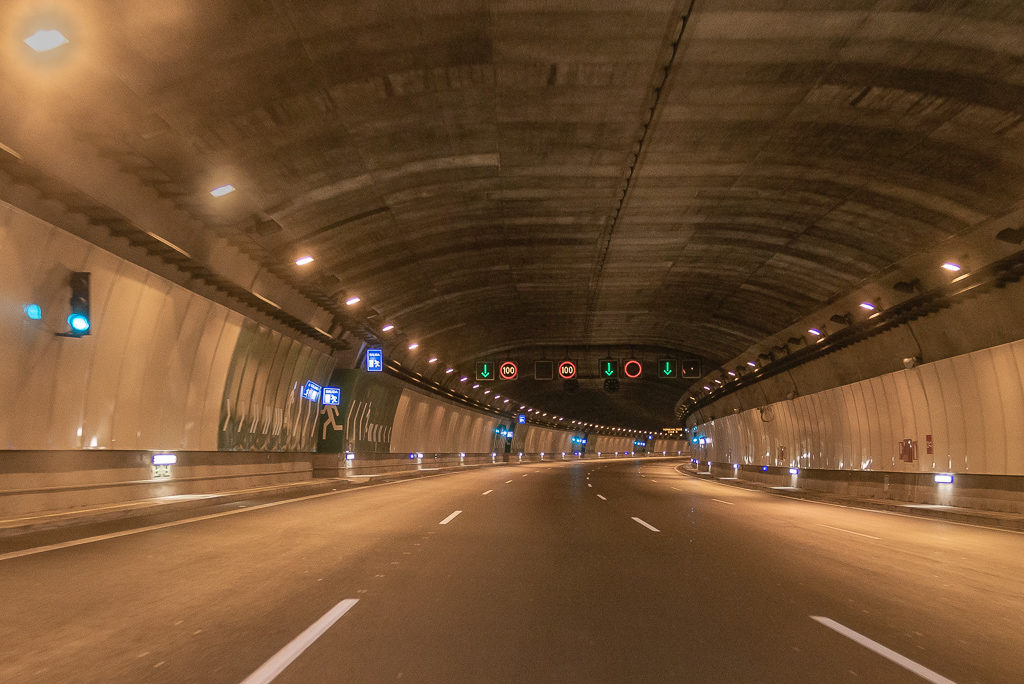
Heading to the Legendary Whitewashed Hill Towns
After turning off the highway, head inland towards one of the gently winding roads that lead to the rugged Sierra Nevada mountain range. Gaining altitude with each bend in the road, you’ll soon begin to see little white villages far off in the distance. As you keep driving, you’ll be able to see that some structures in these towns are built right into the deep rocky gouges in the hillsides, while others cling to the top.
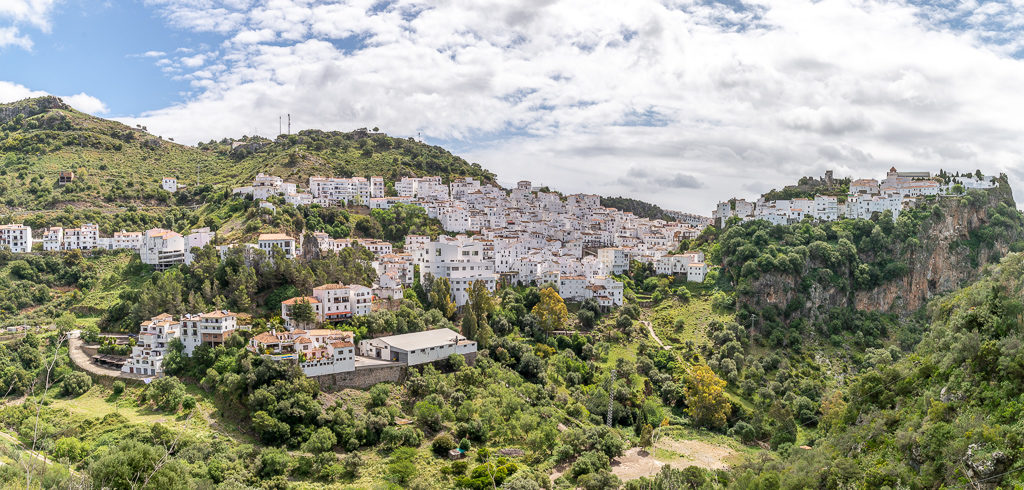
As you are touring the hill towns of southern Spain, continuing. you continue to drive the winding road, the number of white villages increases. At first, you might see just a couple here and there. But when you reach the higher elevations, you’ll be able to see them dotted across the landscape like little clusters of pearls.
The first hill town we stopped in was Casares, an example of a perfect little hill town. From a distance, it looked vaguely like white ruffles adorning the top of a mountain. A closer look revealed its quintessential self.
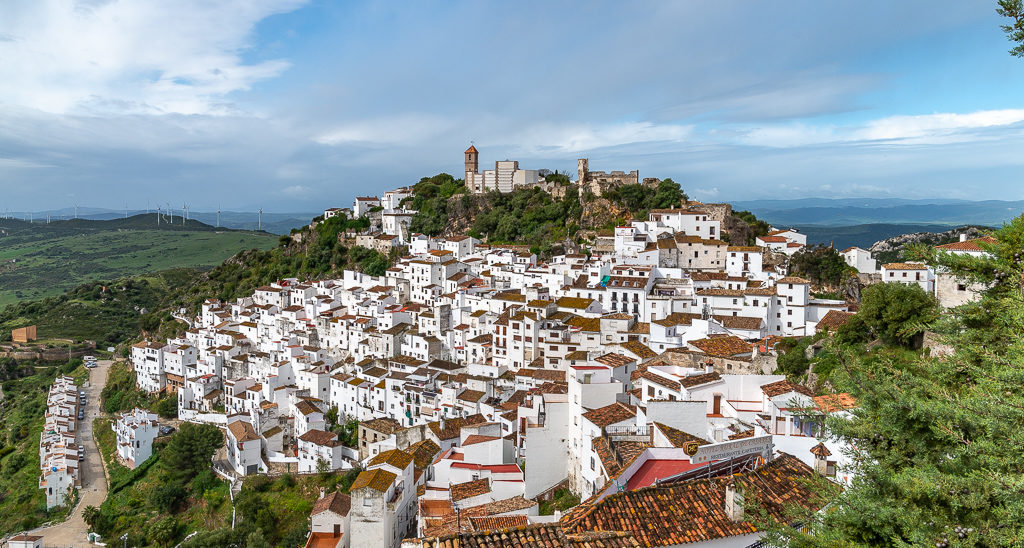
Casares is a place where shops and markets sit precariously close to the streets because there’s no room for yards or gardens. It’s where older gentlemen still gather every morning to socialize at the town plaza. And, it’s where steep cobbled thoroughfares are shared by pedestrians and autos, alike.
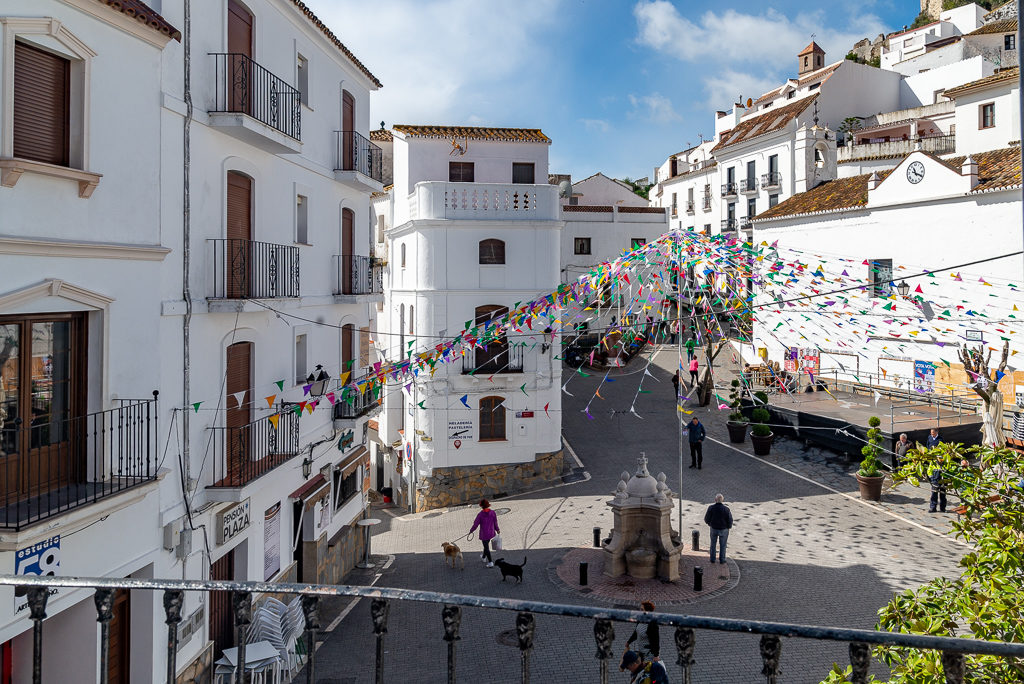
Picture-perfect as it is, however, while touring the hill towns of southern Spain you won’t want to drive your car because the streets are so narrow!
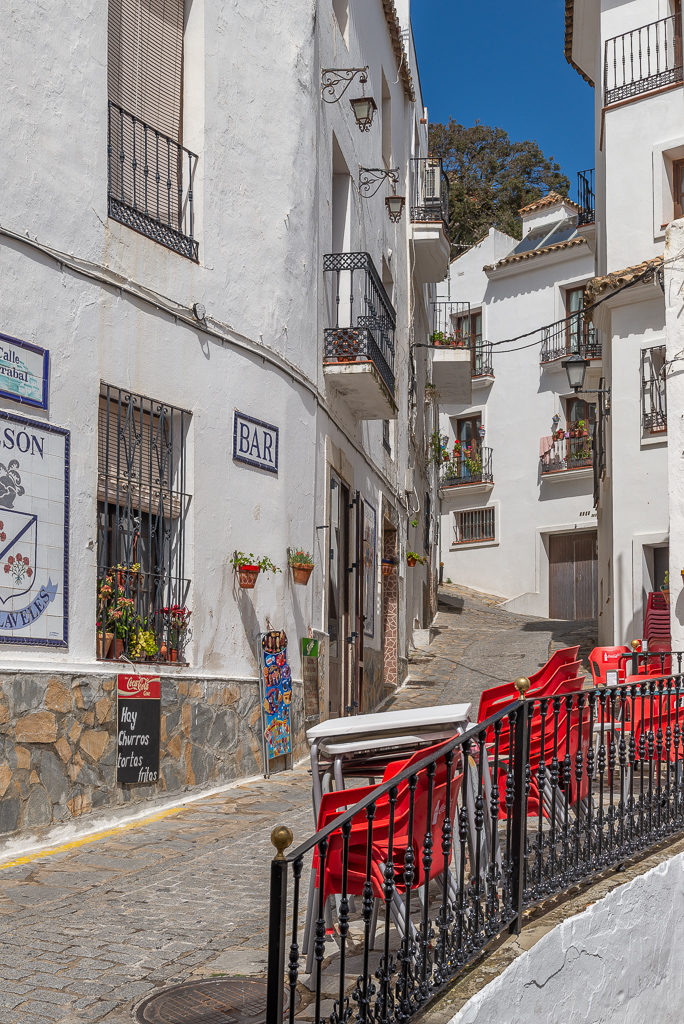
Actually, they’re more like alleys than streets because even locals have to pull in their rear-view mirrors to drive in town! Parking is also a problem, because it’s almost non-existent. We saw people momentarily leave their car and make a quick trip into a store, making other cars wait until he came back out and then all the cars were able to proceed again. Nobody seemed to mind the bit of congestion and people simply wait their turn to get through. It’s a peaceful lifestyle of co-existence that seems to work pretty well. For people unused to driving steep streets that go every which way, it might be a little daunting.
But seeing places like these are part of the travel experience. We parked the car and found a restaurant near the central plaza that served excellent tapas and cappuccinos. After exploring town a little more, we got back in the car and headed towards our next destination – Ronda.
Ronda is a must when touring the hill towns of southern Spain
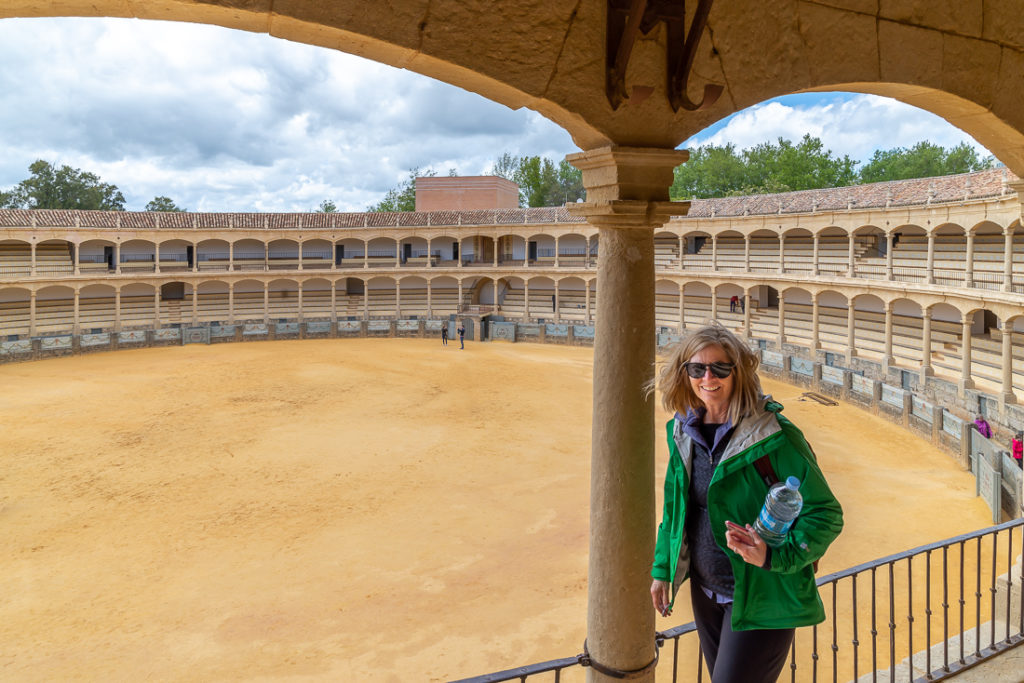
The largest hill town in Andalucia is Ronda, population about 35,000 residents. Ronda is known for three things: its bullring, its New Bridge (built between 1751 and 1793), and its bustling tapas scene. If you park close to the Plaza de Espana, you’ll be within walking distance of all three of these attractions!
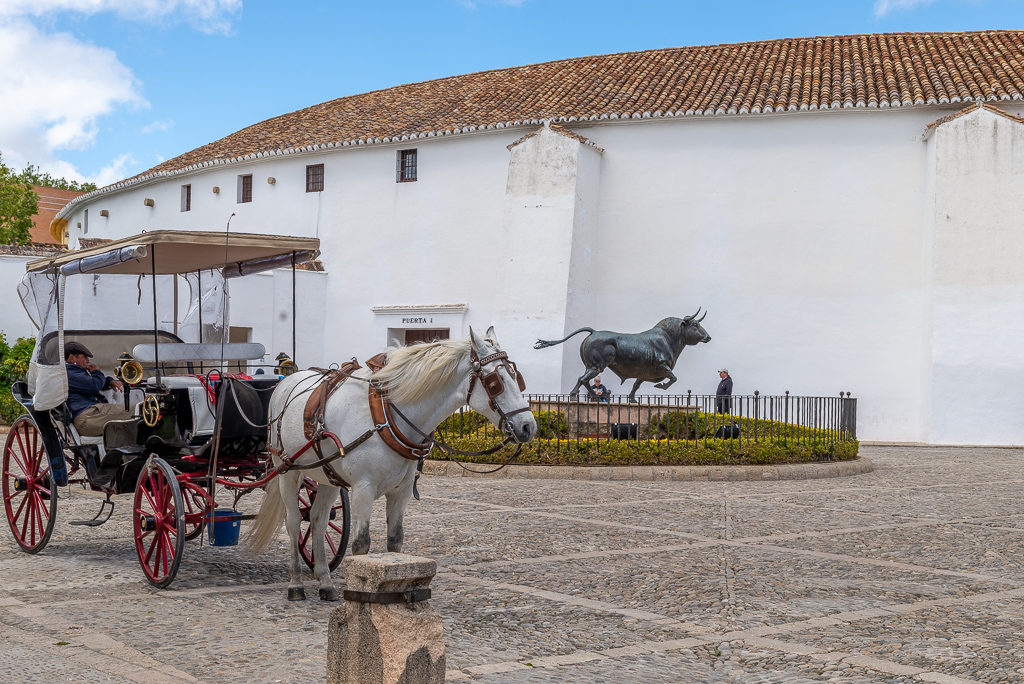
The bullring in Ronda was the first one in Spain. Although events rarely take place in the ring anymore, the site celebrates what was once Spain’s artistic heritage of chivalry, horseback riding, and bullfighting. Besides housing a collection of traditional costumes and a horse gear and gun exhibit, the amazing architectural features include hand-painted tiles, engraved archways, and elegant Tuscan columns.
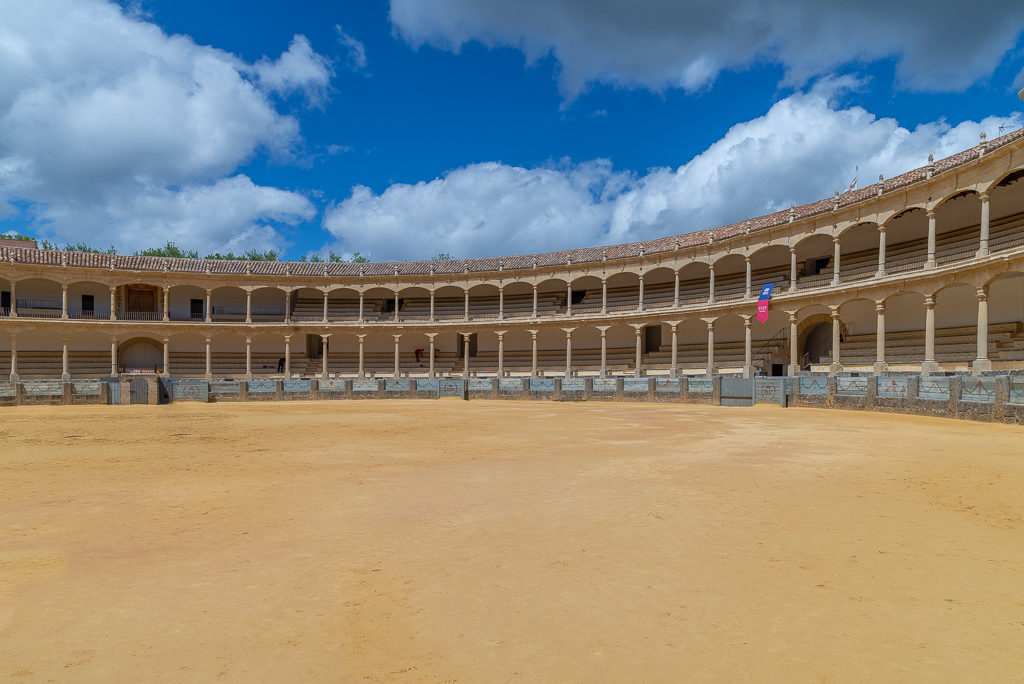
Next door to the bullring is the prestigious School of Equestrianism which also attracts a lot of tourists each year. This internationally acclaimed classical style riding school is open to the public and has special presentations during certain times of the year.
As you walk from the bullring and riding school area, look down the street a couple of blocks on your right. This is where you’ll find the New Town Bridge that connects the two sections of the town.
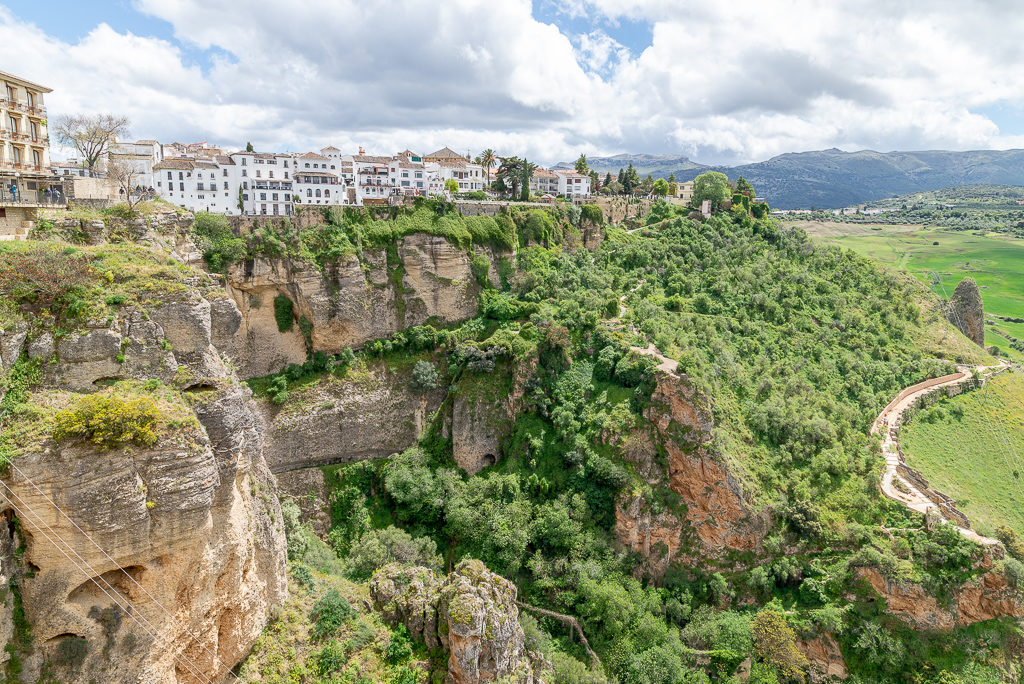
Although people drive across this bridge, it’s worth your time to walk across so you have time to enjoy the views. The bottom of the ravine is about 350 feet to the bottom so imagine how difficult it must have been to build such a structure as this so many years ago! If you have time, climb down into the interior of the bridge. The New Bridge Interpretive Center has interesting displays about the construction of the bridge, but the views are even more outstanding than what you’ll find on top! Right after you cross the bridge, you’ll be in the oldest part of Ronda, the Moorish Quarter. This part of town has a lively tapas scene where cafes and eateries line both sides of the narrow street and people go from place to place sampling the food and wine. It’s a busy area with very limited parking areas. But it’s great fun area to wander the streets and try the regional foods, one of the great experiences of being in this famous town!
Driving the hill towns is a great way to see historic and laid-back Spain. Because, when you head for the Sierras and the Mediterranean is in your rear view mirror, you’ll notice the relaxed pace will be a nice respite from the beach scene!
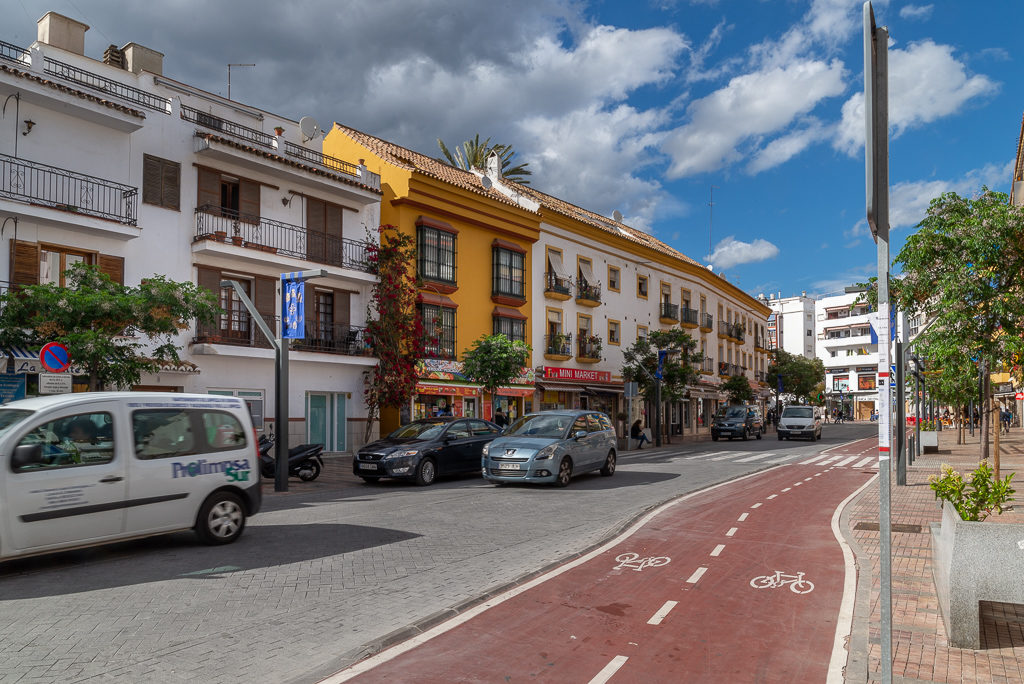
No comments yet.